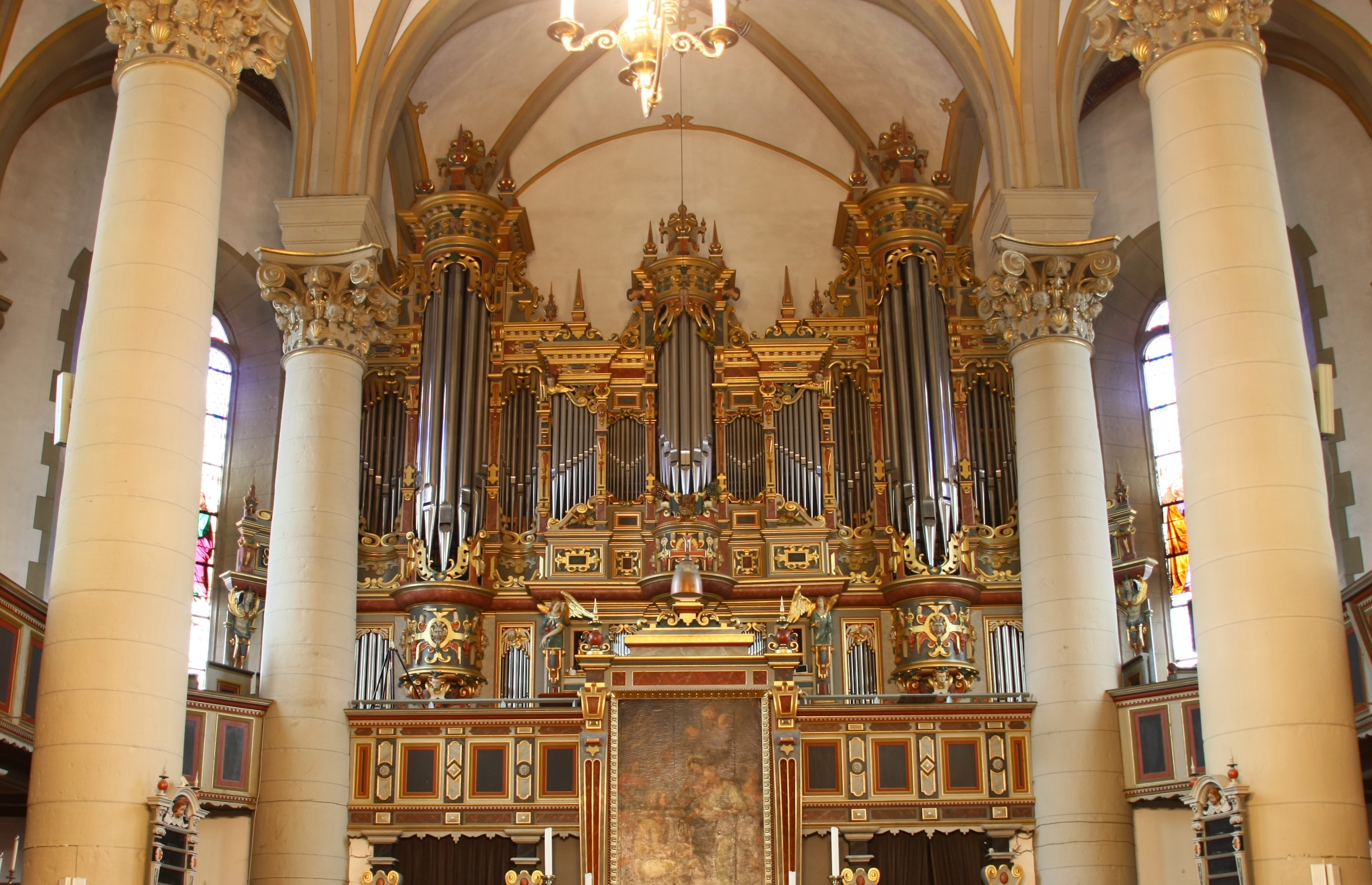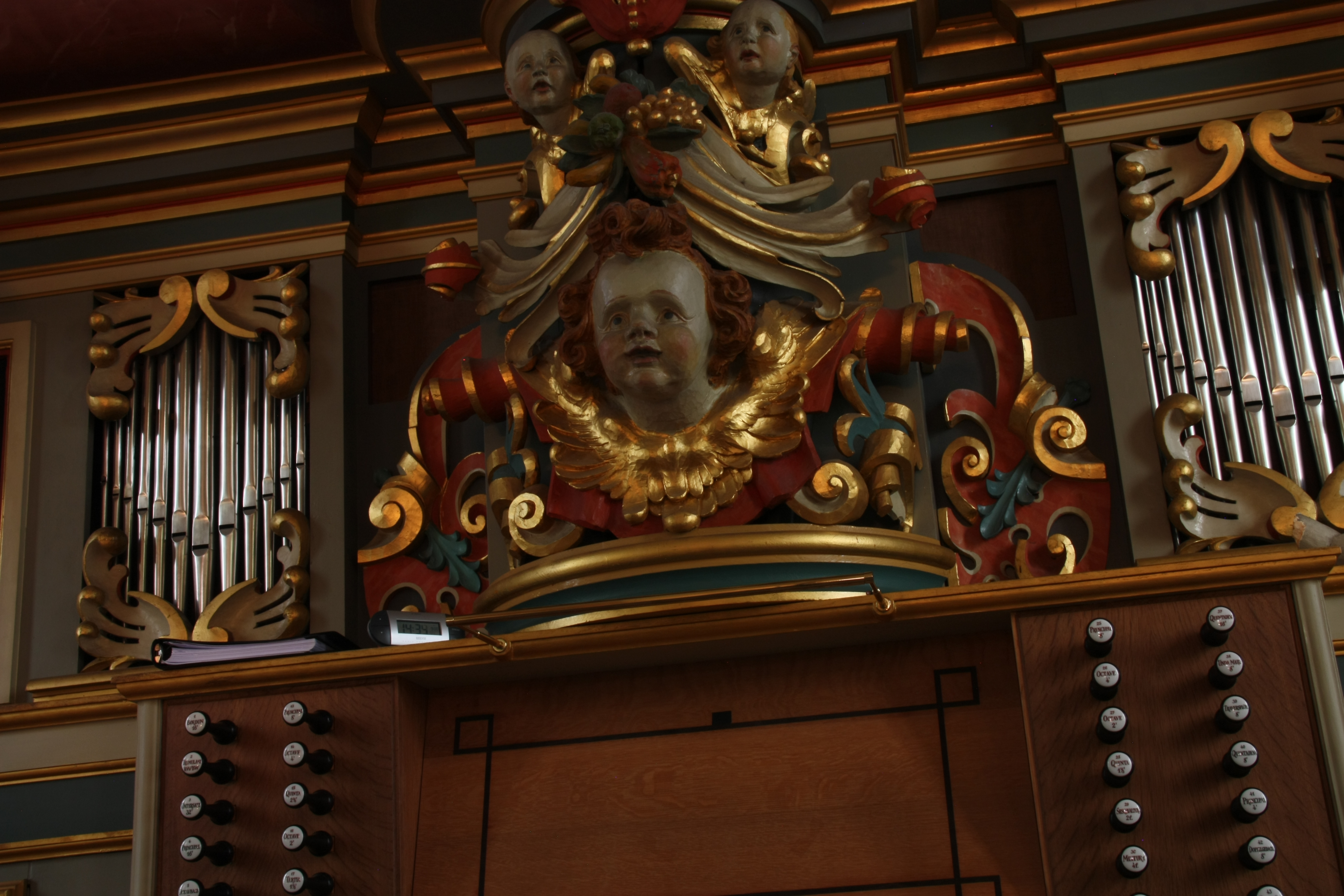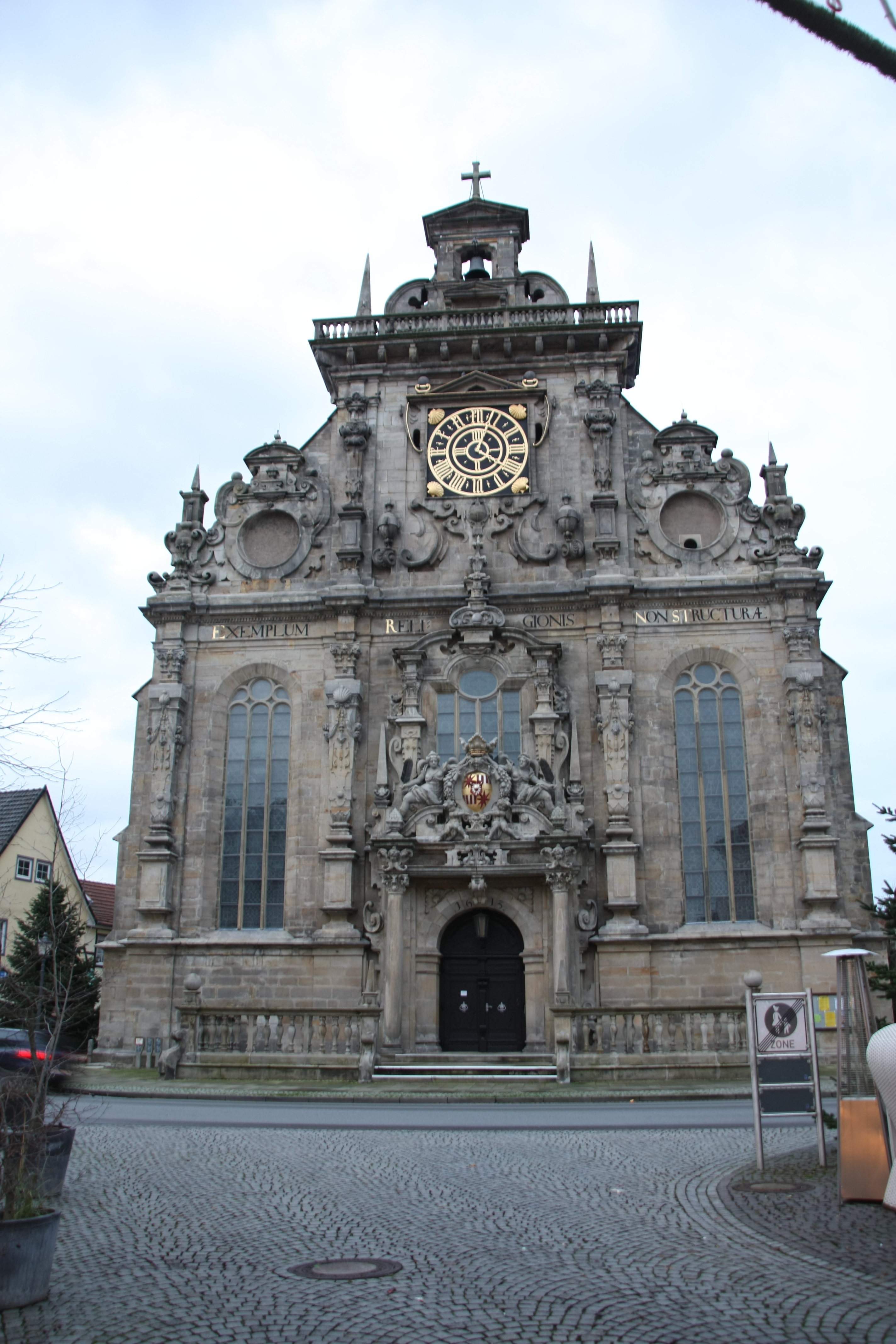Bückeburg, Ev.-luth. Stadtkirche
| Builder | R. Janke |
|---|---|
| Year | ca. 1997 |
| Period/Style | Modern |
| Stops | 47 |
| Keyboards | 3+P |
| Keyaction | tracker/mechanical |
| Tuning | Young II at 440 Hz |
| Sampleset |
Available
 , sampled by
Sonus Paradisi
, sampled by
Sonus Paradisi
|
The town church of Bückeburg had an organ by Esaias Compenius the Older, completed in 1617. During the centuries, the organ was changed many times. In 1962, the organ was completely destroyed by fire.
The organ was recreated in its putative original form in 1965 by Emil Hammer, after the disposition noted by Michael Praetorius.
A new organ was built into the case thirty years later by Rudolf Janke, his opus 114, in the style of Mid-German baroque, reusing some elements of the Hammer organ. The organ is a free interpretation of the old concept of Compenius, and it wittnesses the legacy of the finest neo-baroque organbuilding practices of the late 20th century. Its refined voicing is highly praised by experts and its crisp sound can be admired by organ enthusiasts. The organ is designed on 3 manuals and a pedal, each division having its own principal chorus (Werkprinzip) and a multitude of solo voices. There are 47 speaking stops in total.
The temperament is slightly inequal. Measuring the temperament from the recorded audio does not always give exact results, but we found it similar to the Pythagorei 6-th split temperament, also known as Young II.
The organ was recreated in its putative original form in 1965 by Emil Hammer, after the disposition noted by Michael Praetorius.
A new organ was built into the case thirty years later by Rudolf Janke, his opus 114, in the style of Mid-German baroque, reusing some elements of the Hammer organ. The organ is a free interpretation of the old concept of Compenius, and it wittnesses the legacy of the finest neo-baroque organbuilding practices of the late 20th century. Its refined voicing is highly praised by experts and its crisp sound can be admired by organ enthusiasts. The organ is designed on 3 manuals and a pedal, each division having its own principal chorus (Werkprinzip) and a multitude of solo voices. There are 47 speaking stops in total.
The temperament is slightly inequal. Measuring the temperament from the recorded audio does not always give exact results, but we found it similar to the Pythagorei 6-th split temperament, also known as Young II.
| I Hauptwerk | II Oberwerk | III Unterwerk | Pedal |
|---|---|---|---|
| Bordun 16' | Quintadena 16' | Doppelgedackt 8' | Untersatz 32' |
| Principal 8' | Salicional 8' | Quintadena 8' | Principal 16' |
| Viola da Gamba 8' | Principal 8' | Traversflöte 8' | Subbass 16' |
| Holzflöte 8' | Rohrflöte 8' | Principal 4' | Octave 8' |
| Octave 4' | Unda maris 8' (from c1) | Holzflöte 4' | Gemshorn 8' |
| Gemshorn 4' | Octave 4' | Quintflöte 2 2/3' (ab c0) | Octave 4' |
| Quinta 2 2/3' | Rohrflöte 4' | Hohlflöte 2' | Mixtur 5f 2 2/3' |
| Cornett 4f (ab b0) | Nasat 2 2/3' | Terzflöte 1 3/5' | Posaune 16' |
| Octave 2' | Sesquialtera 2f | Sifflöte 1' | Trompete 8' |
| Tertia 1 3/5' | Octave 2' | Regal 8' | Trompete 4' |
| Mixtur 5-6f 1 1/3' | Waldflöte 2' | ||
| Fagott 16' | Quinta 1 1/3' | ||
| Trompete 8' | Mixtur 4f 1' | ||
| Vox humana 8' |
1650469445-Buxtehude-Praeludium-a-BuxWV153-Buckeburg
0:00
0:00
1650469516-Bach-Wenn wir in h chsten N ten sein-BWV641-Buckeburg
0:00
0:00
https://organindex.de/index.php?title=B%C3%BCckeburg,_Stadtkirche
https://www.sonusparadisi.cz/en/organs/germany/buckeburg-janke-organ.html
https://www.sonusparadisi.cz/en/organs/germany/buckeburg-janke-organ.html
 Pipe Organ Map
Pipe Organ Map


